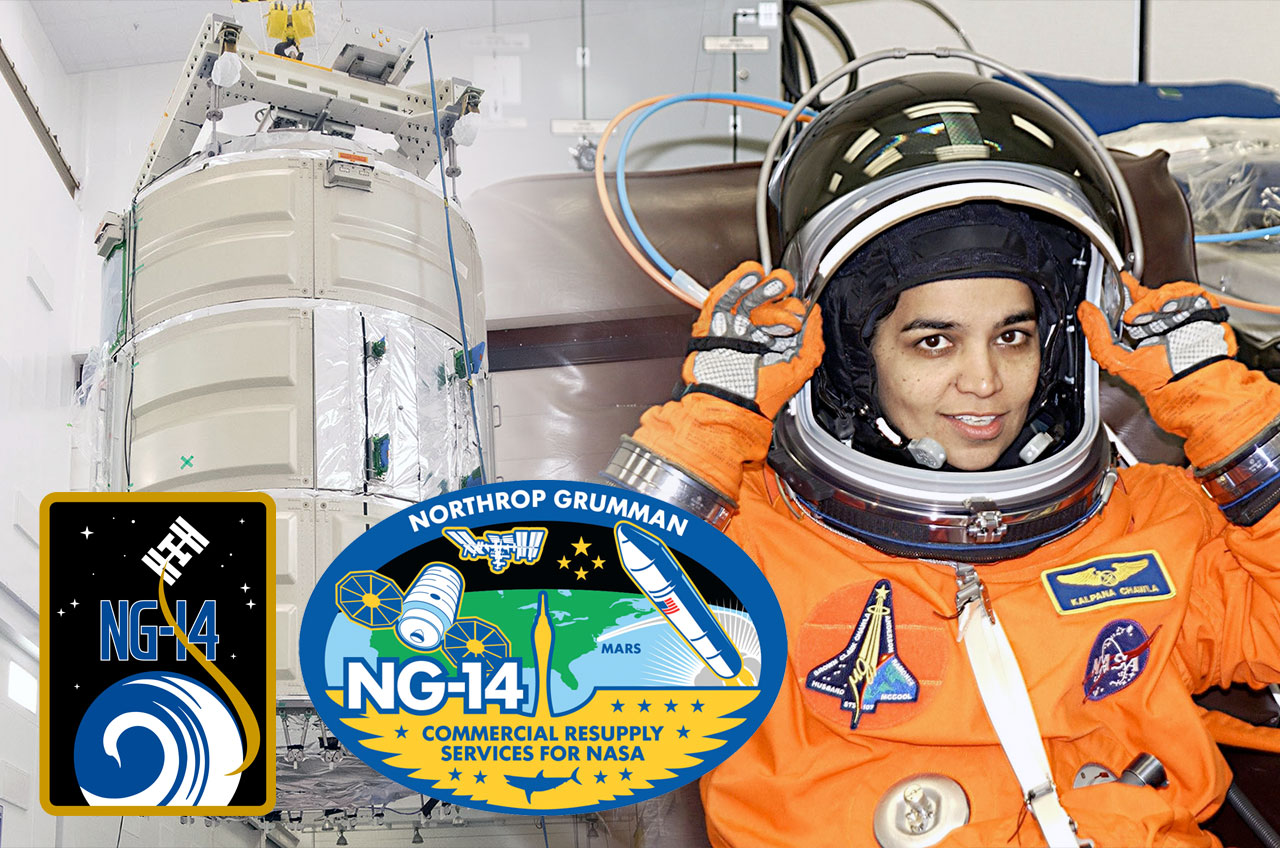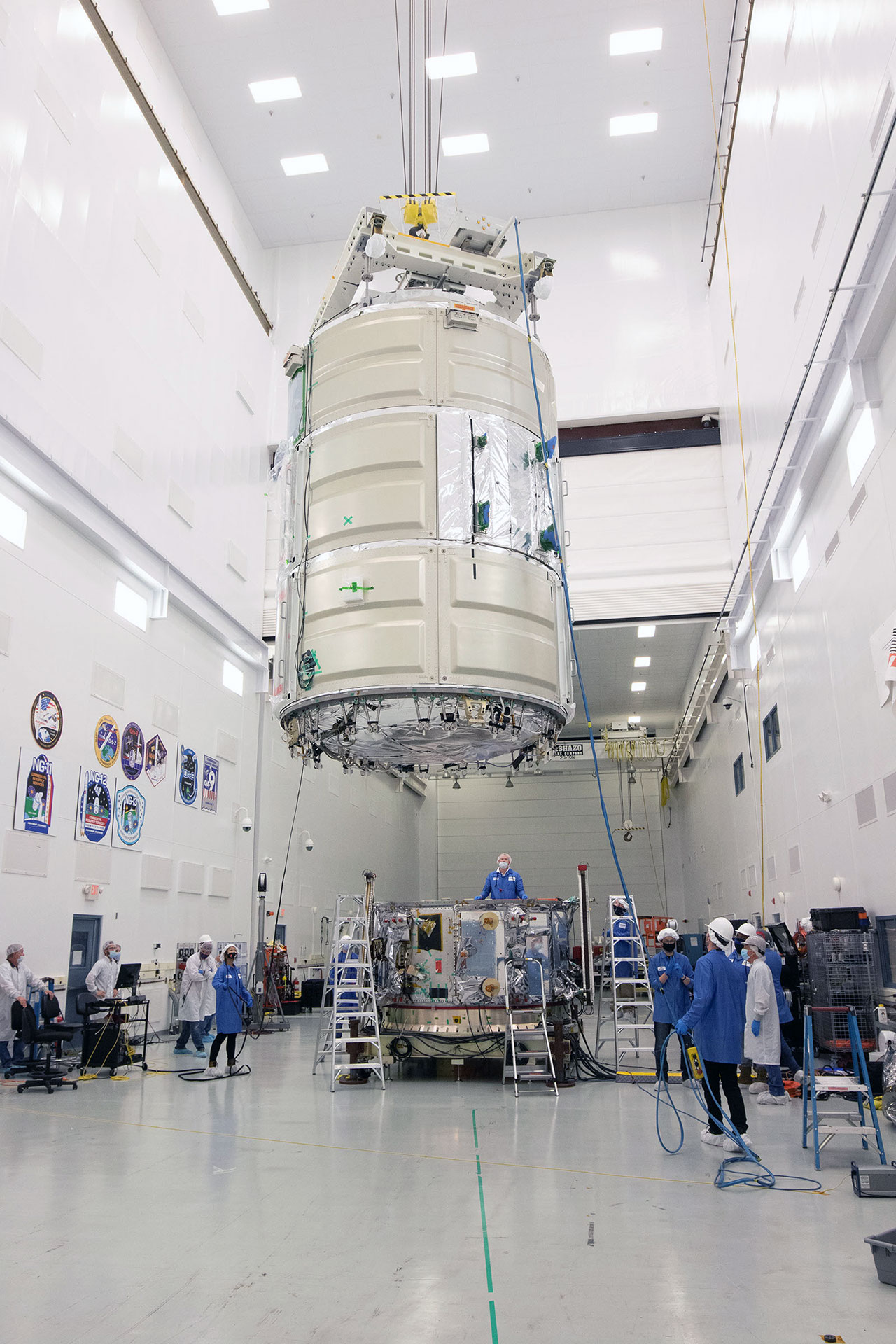Cargo spacecraft named for fallen NASA astronaut Kalpana Chawla
Chawla and six colleagues died in the Columbia shuttle disaster in 2003.

A commercial cargo spacecraft bound for the International Space Station will fly under the name of a fallen NASA astronaut who was the first Indian-born woman to enter space.
Northrop Grumman has announced that its next Cygnus capsule will be named the "S.S. Kalpana Chawla," in memory of the mission specialist who died with her six crewmates aboard the space shuttle Columbia in 2003.
The S.S. Kalpana Chawla is scheduled to launch on the NG-14 mission atop a Northrop Grumman Antares rocket from the Mid-Atlantic Regional Spaceport (MARS) at NASA's Wallops Flight Facility in Virginia on Sept. 29 at 10:26 p.m. EDT (0226 GMT Sept. 30). The spacecraft will arrive at and be attached to the space station two days later.
Related: How the Antares rocket and Cygnus spacecraft work (infographic)

"It is the company's tradition to name each Cygnus after an individual who has played a pivotal role in human spaceflight," Northrop Grumman said in a statement released on Tuesday (Sept. 8). "Chawla was selected in honor of her prominent place in history as the first woman of Indian descent to go to space."
Born in Haryana, India, Chawla moved to the United States to earn her master's and doctorate degrees in aerospace engineering from the University of Texas in 1984 and University of Colorado in 1988, respectively. She then began her career at NASA, conducting research in fluid dynamics at the Ames Research Center in California.
After becoming a naturalized U.S. citizen, Chawla applied for and became a NASA astronaut as a member of "The Flying Escargot," NASA's 15th class of trainees. In 1997, she launched on STS-87, a 15-day shuttle mission that was dedicated to the science flying as part of the fourth United States Microgravity Payload (USMP-4).
Breaking space news, the latest updates on rocket launches, skywatching events and more!
Chawla's second spaceflight, STS-107, came to a tragic end on Feb. 1, 2003, following 16 days of conducting science on board the space shuttle Columbia. A small piece of foam that struck the orbiter's left wing during launch created a hole that went undetected during the mission. Upon Columbia's return to Earth, hot plasma entered the wing, tearing it apart, and the resulting loss of control led to the vehicle disintegrating and the death of the crew.
"While Chawla made the ultimate sacrifice in service to the space program, her legacy lives on through her fellow astronauts and those she has inspired to follow in her footsteps," Northrop Grumman stated. "Her final research conducted on board Columbia helped us understand astronaut health and safety during spaceflight. Northrop Grumman is proud to celebrate the life of Kalpana Chawla and her dream of flying through the air and in space."

On the NG-14 mission, the S.S. Kalpana Chawla will deliver approximately 8,000 lbs. (3,630 kilograms) of cargo to the station. Research flying aboard the Cygnus includes the test of a biologic drug that could be used for the treatment of leukemia, a plant growth study that will cultivate radishes as a model for future crops in space, a compact toilet for astronauts to use on deep-space exploration missions and a 360-degree virtual reality camera that will be used to film during a spacewalk for an immersive cinematic production.
The S.S. Kalpana Chawla is the second Cygnus to be named for a member of the STS-107 crew. Columbia's last commander, Rick Husband, was similarly honored in 2016.
Other astronaut namesakes have been David Low, Gordon Fullerton, Janice Voss, Deke Slayton, Alan Poindexter, John Glenn, Gene Cernan, John Young, Roger Chaffee and Alan Bean. The most recent Cygnus, which launched in February and departed the space station in May, was named the S.S. Robert Lawrence after the first African American to be selected as an astronaut.
An additional Cygnus was named the S.S. J.R. Thompson after a former company executive.
Follow collectSPACE.com on Facebook and on Twitter at @collectSPACE. Copyright 2020 collectSPACE.com. All rights reserved.

Robert Pearlman is a space historian, journalist and the founder and editor of collectSPACE.com, a daily news publication and community devoted to space history with a particular focus on how and where space exploration intersects with pop culture. Pearlman is also a contributing writer for Space.com and co-author of "Space Stations: The Art, Science, and Reality of Working in Space” published by Smithsonian Books in 2018.
In 2009, he was inducted into the U.S. Space Camp Hall of Fame in Huntsville, Alabama. In 2021, he was honored by the American Astronautical Society with the Ordway Award for Sustained Excellence in Spaceflight History. In 2023, the National Space Club Florida Committee recognized Pearlman with the Kolcum News and Communications Award for excellence in telling the space story along the Space Coast and throughout the world.

